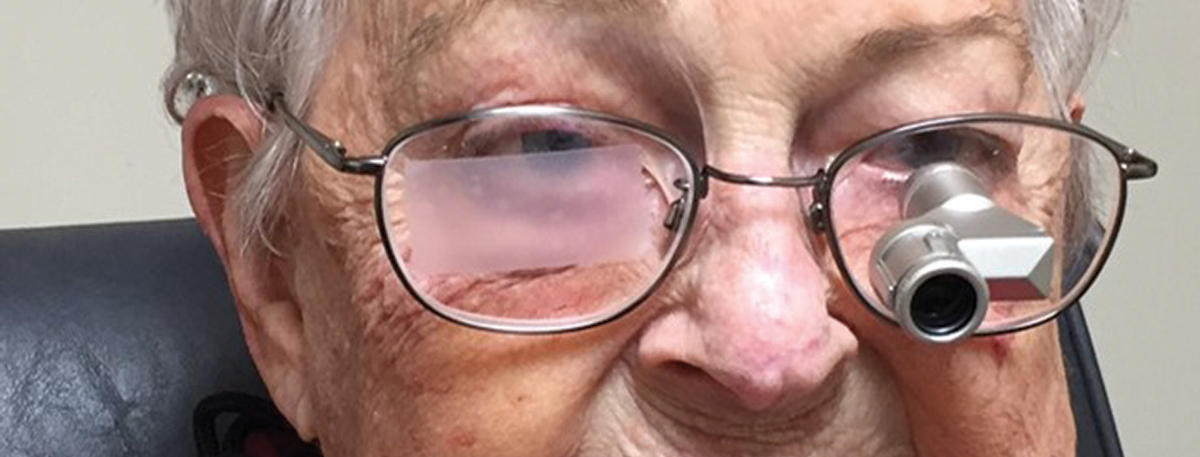 |
|
Establishing a low vision program at an academic medical center increased the referral rate for qualified patients. Photo: David Lewerenz, OD. Click image to enlarge. |
Millions of individuals suffer from low vision for a variety of reasons, chief among them uncorrected refractive error, AMD and glaucoma. Studies have shown that, although vision rehabilitation can improve quality of life, few patients make use of these resources.
A new study in Optometry and Vision Science assessed low vision referrals to determine whether establishing a low vision program at an academic medical center would have an effect on referral rates. The researchers found that this approach significantly increased rates but pointed out that there’s still much room for improvement.
In the study, the researchers reviewed 2,014 medical records of patients who qualified for low vision services to assess rates of referral before and after the establishment of the low vision program. Patients were divided into two visual acuity categories based on the better-seeing eye: 20/70 to 20/200 and worse than 20/200.
The researchers reported that 91.7% of patients had a visual acuity of 20/70 to 20/200; 89.8% of these patients and 74.4% of patients with a visual acuity of 20/200 or worse were never referred for low vision services. Only 2.2% of patients with 20/70 to 20/200 vision were referred for services on their first visit before the program’s establishment. This rate improved significantly after, but only to 8%.
Patients with a visual acuity of 20/200 or worse were more likely to be referred for low vision, with 12.5% of patients referred before the program’s establishment and 31.9% of patients referred after. The researchers noted that their data showed 10.3% of patients in the study declined referral.
“It’s possible that our low utilization rate may be due to reasons of patients’ lack of knowledge about low vision services and refusal of low vision assistive devices, social stigma, fear of loss of employment, low perceived necessity and denial of magnitude of illness,” the researchers wrote in their paper. “On top of this, visual impairment is an invisible disability. Patients feel society may not recognize their disability as they appear fine both physically and socially. Due to being an invisible disability, employers, caregivers, family and friends may not appreciate the extensiveness of the vision loss and why it affects the patient’s quality of life so profoundly. This has a significant effect on the patients’ behavioral health and their own perceptions of vision loss. Dependence on family and caregivers for transportation and activities of daily living especially in rural areas is a burden.”
The researchers also noted in the study that caregiver burden may cause significant financial hardship since they must take time off work and their daily lives to accompany patients to medical appointments.
“We believe developing a multidisciplinary healthcare team while simultaneously educating eyecare providers and communities about low vision rehabilitation services will provide the most benefit to low vision patients,” the researchers concluded.
They noted that other institutions have used patient peer advocates to assist with education and counseling in the community. These advocates are connected with patients who receive a diagnosis of irreversible vision loss. Other team members may include social workers, psychologists and geriatricians.
Dalzotto K, Banghart M, Thomas-Virnig C, et al. Assessment of low vision referrals before and after establishment of a low vision program at an academic medical center. Optom Vis Sci. November 28, 2022. [Epub ahead of print]. |


